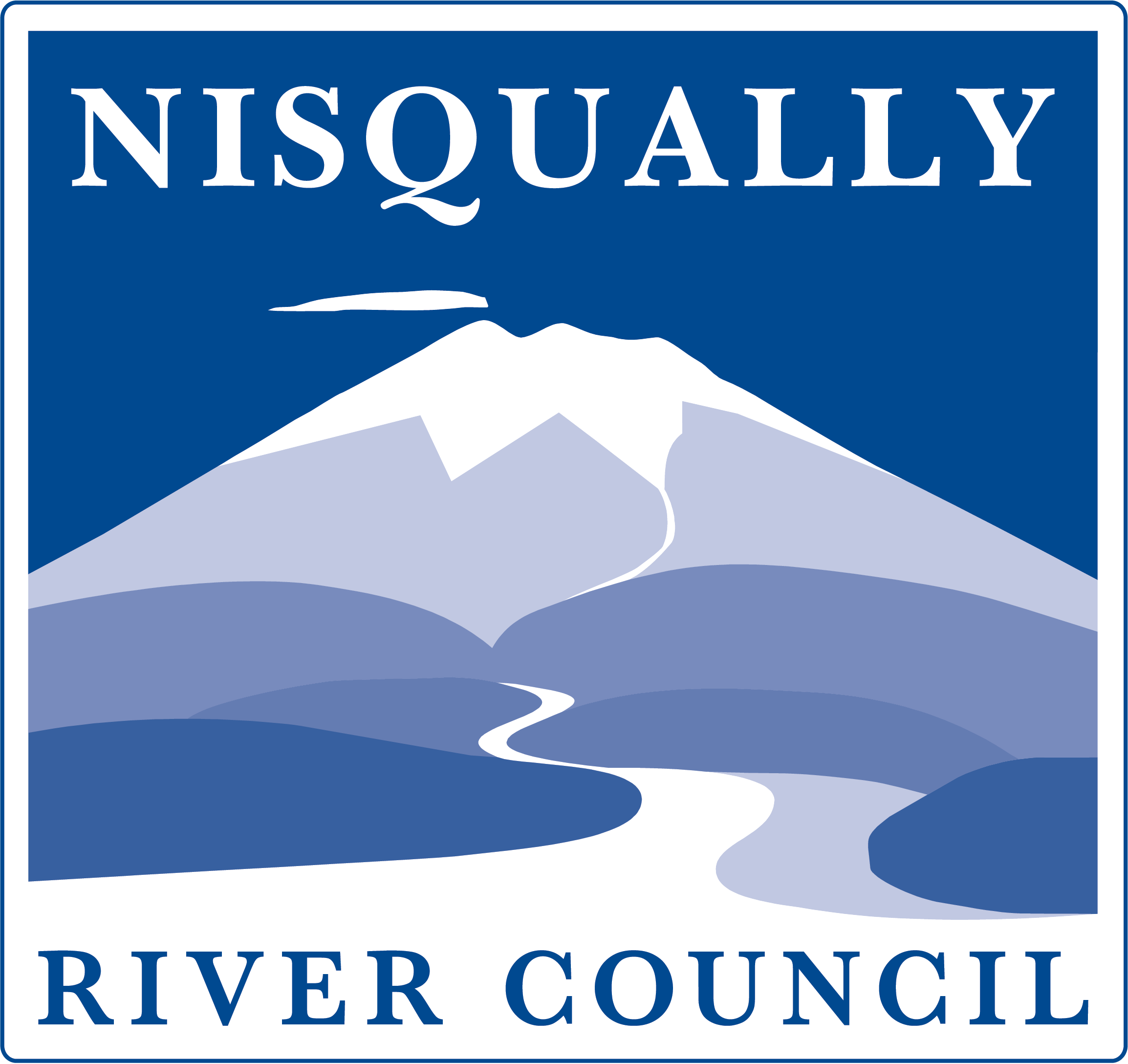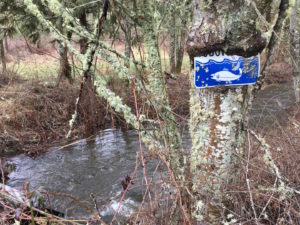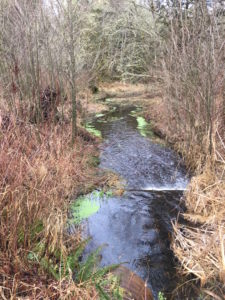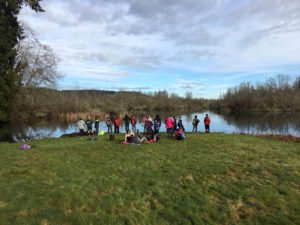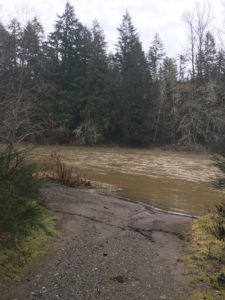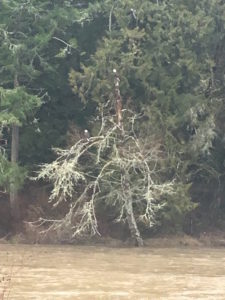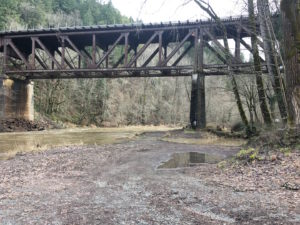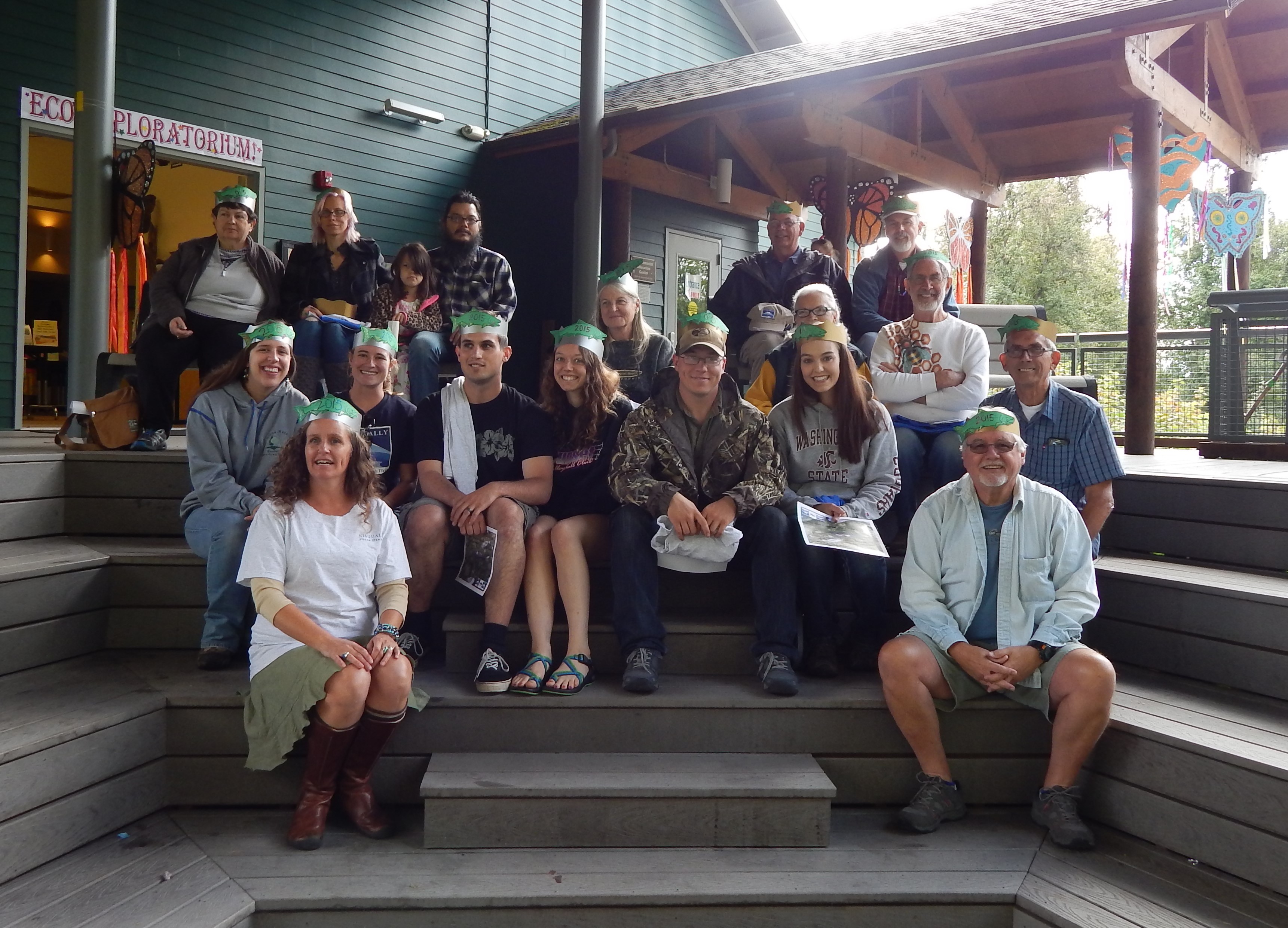Each school year, thousands of students participate in two water quality monitoring events hosted by the Nisqually River Education Project (NREP). The citizen science effort has been ongoing for over 25 years and helps to identify areas of the watershed that have poor water quality. NREP focuses on salmon recovery, so students learn about salmon bearing streams in their backyards, and the parameters that are essential for salmon.
Thursday, February 16, 2017 was this year’s winter monitoring day! We had 38 teachers monitor water from 35 different locations. Monitoring sites were scattered throughout the Nisqually Watershed, from as far upstream as Ashford, all the way to the lower Nisqually River just before it spills into Puget Sound.
Students test several parameters to determine in their testing site could be suitable for salmon:
Dissolved Oxygen tells us how much oxygen is in the water. Salmon need at least 9 mg/liter of oxygen.
BOD (Biological Oxygen Demand) measures how much oxygen is being used by bacteria in the water. Too much bacteria means there is less oxygen available for fish. Optimal levels are less than 6 mg/liter.
pH measures how acidic or basic the water is. Salmon need water that is between 7-8, or neutral. Changes in pH can change the aquatic ecosystem and impact food chains.
Water Temperature is easy – it tells us how warm or cold the water is. Salmon require temperatures less than 12°C. Water that is cold also holds more dissolved oxygen, which is great for salmon!
Nitrates measure the amount of nutrients in the water. Less than 1 mg/liter is optimal because too many nutrients leads to high amounts of bacteria.
Turbidity is how clear or cloudy water is. Salmon prefer water with less than 20 JTUs, because very cloudy water can smother eggs, increase temperatures, result in low visibility, and effect breathing.
Total Solids is similar to turbidity, but it measures how much the cloudiness weighs. Salmon like to have less than 25 mg/liter of total solids.
Fecal Coliform is a test that shows how many fecal colonies are in the water. While this doesn’t necessarily impact salmon, the presence of fecal matter in the water is an important health concern for human! We like to see 0 colonies per 100 mL of water.
The hands-on learning opportunities provided by water quality monitoring allows students to connect more deeply to their environments. Teachers and students understand how land use can impact water quality, and begin to think about actions that they take to improve conditions.
This monitoring day is part of a larger focus. In March, classrooms that participated in both water quality monitoring events will send 8 student delegates to The Evergreen State College for Student GREEN Congress. There, students will share their data with their peers, and brainstorm action projects to reduce the parameters that don’t meet optimal conditions.
